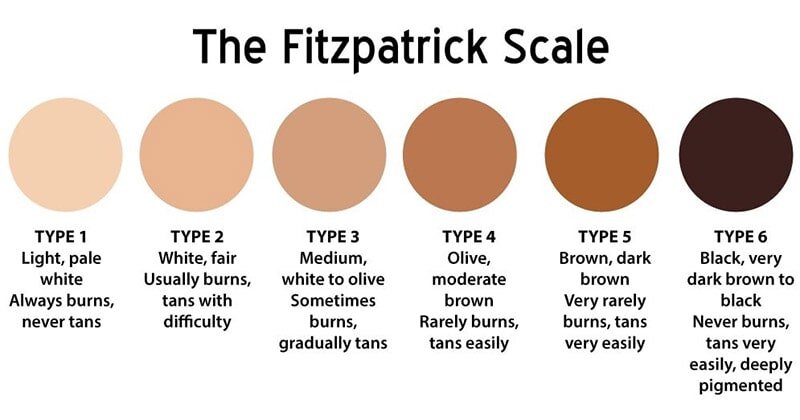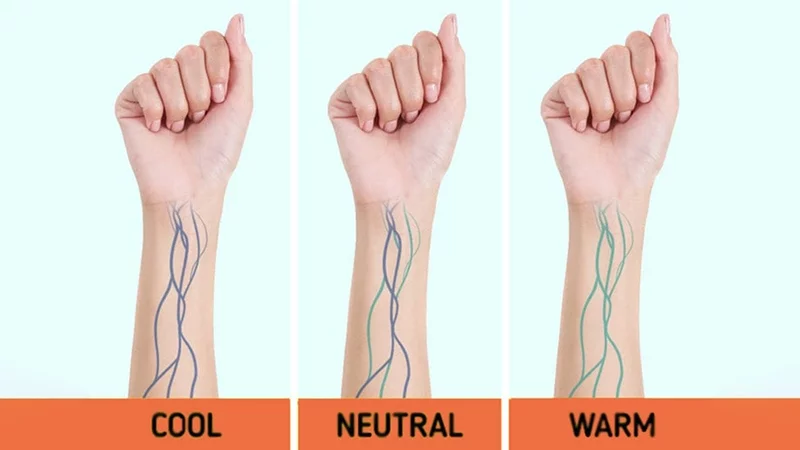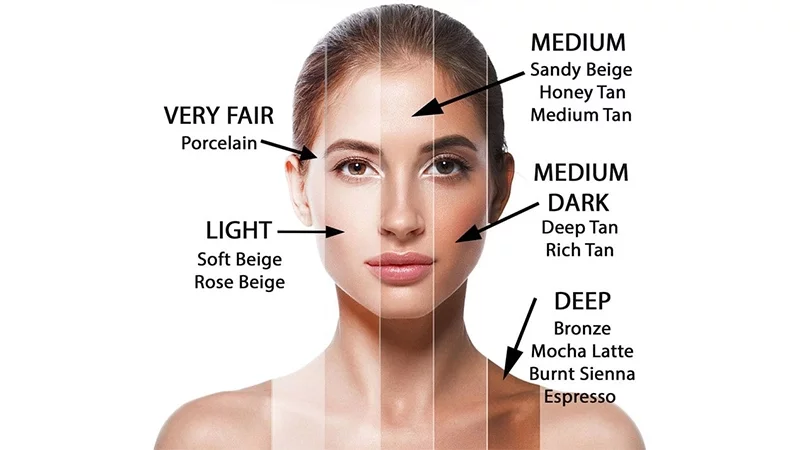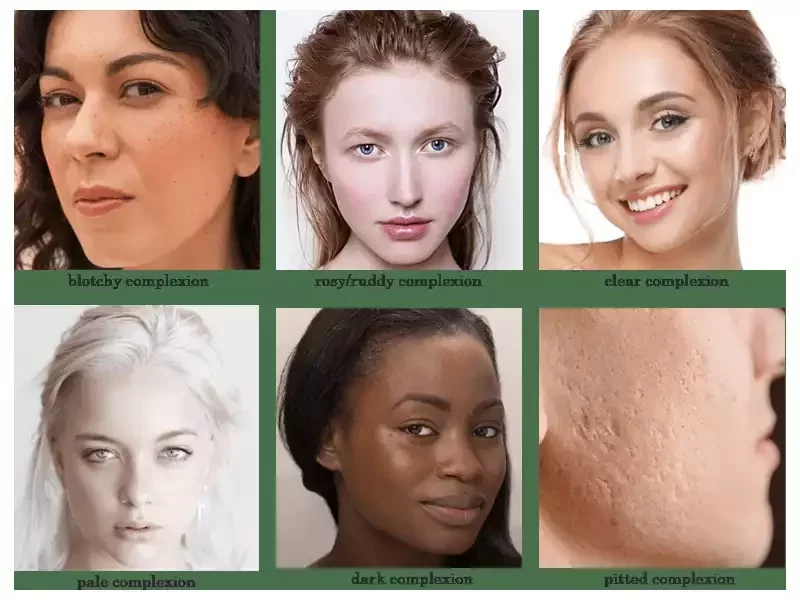Published on 6 Jan 2024
All You Need to Know About Skin Tone and Undertone
- ByMedical Content Team
- Medically Reviewed byDr. Sabine Kulhanek
Fact checked

When it comes to physical appearance, we humans have a myriad of differences. Coming from different ethnic and racial backgrounds, we are born with physical traits that we have inherited from our ancestors. One of the most important hereditary traits is skin color. Skin color is one of the main physical characteristics, which defines our identity and keeps us connected to our roots. From the skin color, one can guess an individual’s race or geographical region they come from. If you see a person with very dark skin you will probably guess that they are most probably of African descent. Light skin is on the other hand often associated with Europe and Northeast Asia.
In this article, we are going to walk you through everything you need to know about skin color including the difference between skin tone, undertone, and complexion so that you will know beyond merely distinguishing between light and brown skin.
Also read: Exploring the Fascinating World of Nose Shapes Across Ethnicitie
What is skin tone?
Skin tone is the color of the surface of the skin, and that is why it is also called ‘overtone’. It is what we normally mean when describing an individual’s skin in terms of color. When we say that a particular person has light or dark skin we are talking about their skin tone.
The overtone of the skin is determined by the amount of melanin, especially eumelanin, in the epidermis (the outermost layer of the skin). Melanin is the natural skin pigment that colors the skin, hair, and eyes. It is produced by a type of specialized cells called melanocytes. Besides its pigmentation function, melanin also provides protection against sunlight. It absorbs harmful UV rays before they damage the DNA of the skin cells. Therefore, people with darker skins are generally at a lower risk of photoaging (premature aging of the skin caused by prolonged exposure to ultraviolet radiation) and skin cancer.
The amount of melanin in the skin varies from person to person. It is, in large part, determined by genetics but can also change to some extent because of external factors including sun exposure, hormonal fluctuations, and aging. This causes people to have varying skin tones across a spectrum ranging from extremely fair to extremely dark.
How to determine my skin tone?

Determining the skin tone isn’t a clear-cut thing. It’s because color is a continuum with an indefinite number of shades and hues and an individual’s skin can fall anywhere on this continuum. In addition, skin tone can change a few shades depending on your circumstances; for example, when you spend a lot of time outdoors and get more sun exposure you get darker skin compared to times you spend more time indoors. That all being said, a system of classification commonly used for skin tones is the Fitzpatrick scale, which was developed by American dermatologist Thomas B. Fitzpatrick in 1975. Although this system was not actually meant for the classification of skin tone (it was devised to determine skin cancer risk), a lack of a precise classification system for skin color led to this system being used in the cosmetic industry to categorize skin tones as well.
That all being said, a system of classification commonly used for skin tones is the Fitzpatrick scale, which was developed by American dermatologist Thomas B. Fitzpatrick in 1975. Although this system was not actually meant for the classification of skin tone (it was devised to determine skin cancer risk), a lack of a precise classification system for skin color led to this system being used in the cosmetic industry to categorize skin tones as well.
This classification scheme is based on the original amount of melanin in the skin (and hence the skin tone) and its reaction to sunlight. It divides the skin into 6 categories, which are summarized as follows:
| Type of skin | Skin, hair, and eye color | Reaction to sunlight |
|---|---|---|
| I | pale white skin, red or blond hair, blue eyes, freckles | always burns, never tans |
| II | white or fair skin, red or blond hair, blue, hazel, or green eyes | usually burns, tans with difficulty |
| III | cream-white or fair skin, any eye or hair color | mildly burns, gradually tans to olive |
| IV | light brown skin | rarely burns, easily tans to moderate brown |
| V | dark brown skin | very rarely burns, tans very easily, |
| VI | deeply pigmented dark brown | never burns, always tans |
It is, however, not always so straightforward to assign an individual’s skin to one of these categories. A person may have a mixture of characteristics from two or more of these categories, so it is best to see which category you are closer to overall.
Disclaimer: The Fitzpatrick scale is just a general guide giving you an overall idea of how different skin tones react to sun exposure and you shouldn’t — especially if you are dark-skinned — interoperate it as a greenlight for unprotected sun exposure. Although light-skinned people are more prone to sun damage and skin cancer, including melanoma, people with dark skin can still get sunburns and develop skin cancer if they stay in the sun for prolonged periods.
What is skin undertone?

When shopping for makeup products or clothes, a particular color might catch your eye. You try it on — or hastily buy it — but to your dismay, it doesn’t look good on you. This is because it’s not meant for your skin undertone.
Skin undertone is the subtle hue beneath the skin surface. It is different from the skin tone (overtone) in that the skin tone can change but the undertone never changes. People with similar skin tones may have different skin undertones.
Unlike skin tones that are very diverse, skin undertones are divided into 3 main categories: warm, cool, and neutral
Also Read: Sun Protection: All You Need to Know About SPF, UVA, and UVB
How to determine my skin undertone?
You can determine your skin undertone by doing a few tests. Just remember to do the test in natural light. Here are the tests:
Vein Test
The vein test is the quickest way to figure out your skin undertone. Examine the veins in the underside of your wrist and see if it looks greenish or bluish. If it looks more bluish or purple, you have a cool undertone. If it looks greenish, you have a warm undertone. Not sure if it’s green or blue? Then you may have a neutral or olive undertone.
White Paper Test

In natural light, hold up a large piece of white paper or a white piece of clothing next to your face. Compare the color of your face against the whiteness of the paper (or clothing). If it looks yellowish, you tend to have a warm undertone, but if it looks more pinkish or rosy then you probably have a cool undertone.
Jewelry Test
You should have a discerning eye for this test. Put on a piece of gold and silver jewelry, separately. (You can wear gold earrings on one ear and a silver one on another, or a gold bracelet on one wrist and a silver one on another). Look in the mirror and see which one looks good on you. You may want to ask a friend as well to tell you which one is more flattering on your skin. If opinions are mixed, ask more people to find the majority opinion. If the gold jewelry looks better on you, you have a warm skin undertone. If the silver looks more flattering, you have a cool undertone. If both look good or there is no clear consensus of opinions, you have a neutral skin undertone.
Sun Test
Although this has more to do with skin overtone than undertone, some experts claim that the undertone also affects how the skin reacts to the sun. According to them, if your skin tans easily in the sun without burning, you are more likely to have a warm or neutral undertone. But if you burn easily, you probably have a cool undertone.
Clothing Color Test
Just like the jewelry test, this one too is about the sense of discernment. Try on clothes with different colors and check (or have someone check) the color against your skin. If warm colors are more flattering on you then you have a warm undertone. If colors on the cooler side of the spectrum look better on you, you have a cool undertone. People with neutral undertones have less trouble picking the right color as both warm and cool colors look good on them.
Also Read: Why Is My Face Red? Possible Causes and Treatments
Why knowing skin undertone matters

A new lipstick looks flawless on your friend but when you get yourself one of them (same color, same brand) and put it on, it makes your lips look grayish or dead? The reason is that the color isn’t right for your skin undertone.
Understanding your skin undertones is crucial for choosing the right makeup products or clothes. No matter whether you’re shopping for a makeup foundation, concealer, lipstick, nail polish, and hair color, or a piece of clothing, you always need to make sure the color suits your undertone.
The general rule about choosing the right color is that warm colors complement warm undertones and cool colors complement cool undertones. This applies to makeup, clothes, and hair color as well. You can use this great article by Healthline to identify your skin undertone!
What is skin complexion

Some people confuse skin complexion with skin color or skin tone, but they are not exactly the same thing. Skin complexion refers to the overall appearance of the skin, including but not limited to skin color. According to the Oxford Dictionary, complexion is “the natural color, texture, and appearance of a person’s skin, especially of the face.”
When we say that someone has a flawless complexion, we mean that they have smooth skin with no imperfections such as blemishes, pimples, discoloration, etc. no matter what the skin tone and undertone is, which is whether it’s fair, brown, warm, or cool. Similarly, a dull complexion is a type of skin that is uneven and does not reflect light well, hence referring to the texture — not color — of the skin. However, if we say that someone has a pale or olive complexion, we are talking about the skin tone or color.
Summary
As far as skin color is concerned, there are two main concepts: skin tone (overtone) and skin undertone. Skin tone is the surface color of the skin and is determined by the amount of melanin in the skin — the more melanin, the darker the skin. Human skin tone is largely genetic but can change to some extent due to external factors, especially sun exposure.
Skin undertone is the hue under the skin, which includes 3 main categories: warm, cool, and neutral —plus a secondary category, olive. Your skin undertone never changes. Understanding your skin undertone is key to choosing the right makeup, hair color, and clothing color. People with bluish veins have a cool and those with greenish veins have a warm skin undertone.
FAQ
How does skin tone affect the absorption of vitamin D?
Darker skin tones, which contain more melanin, absorb less UV radiation, leading to potentially lower vitamin D synthesis.
Can skin undertone change over time, and what causes these changes?
Undertones are generally consistent, but perceived changes may occur due to sun exposure, aging, or skin conditions.
How do health conditions affect skin tone and undertone?
Conditions like anemia or jaundice can alter pigmentation, while chronic illnesses might dull the skin, affecting its overall appearance.
What role does genetics play in determining skin tone and undertone?
Genetics determine the amount and type of melanin in the skin, dictating both skin color and underlying tones.
How can I determine my undertone accurately at home?
Check the color of your veins under natural light, observe how your skin reacts to the sun, and
see which jewelry and colors complement your skin best.
What are the implications of undertone misconceptions in the beauty industry?
Misconceptions can result in limited shade ranges, making it difficult for those with uncommon undertones to find suitable products, impacting inclusivity and self-esteem.




